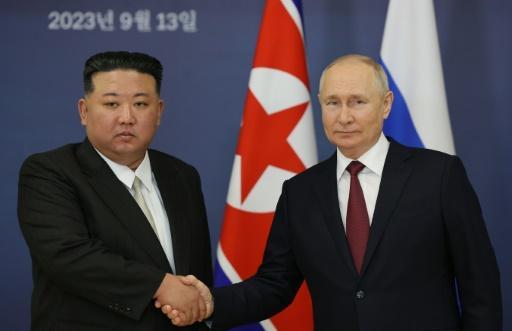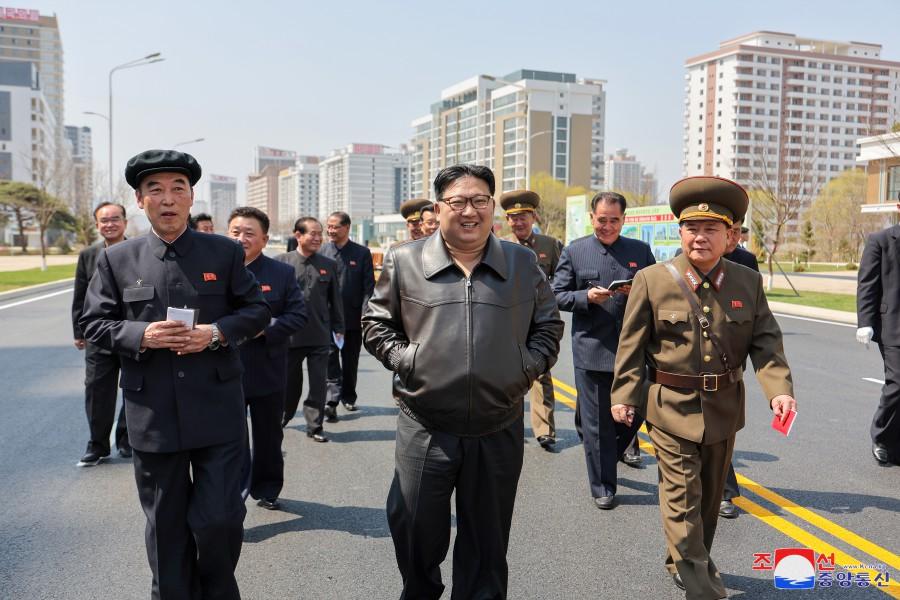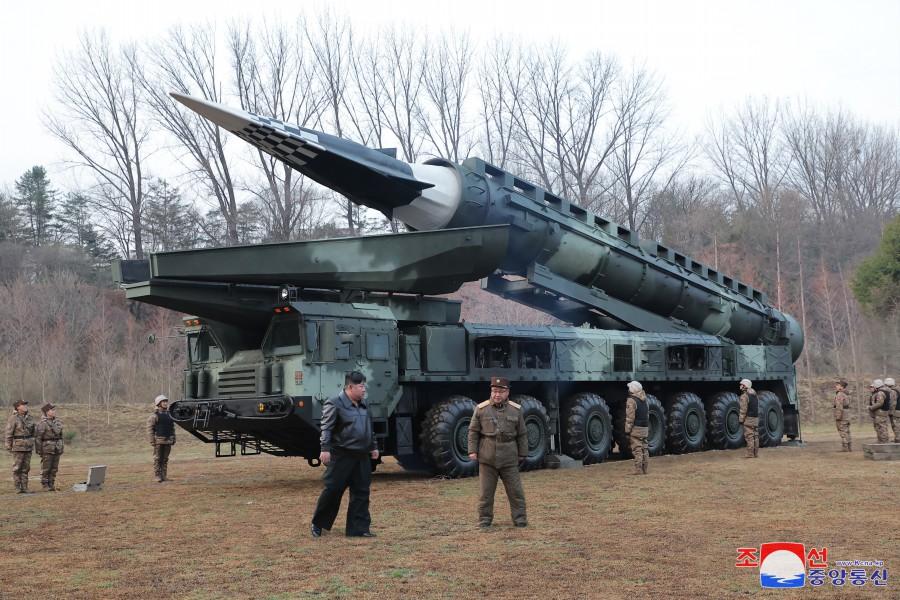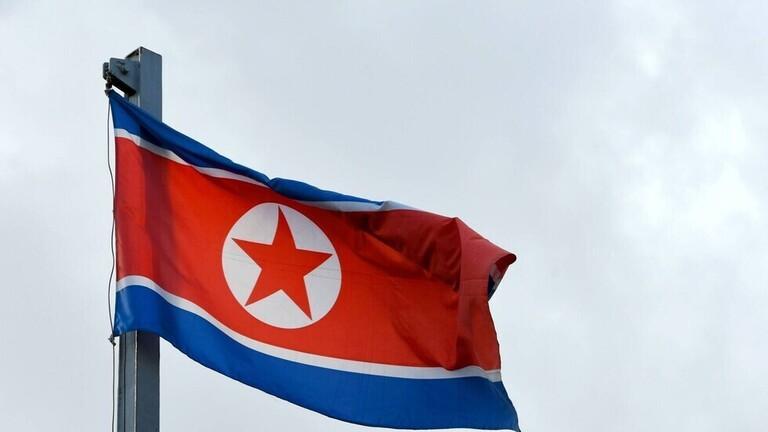الأخبار
U.S. Indo-Pacific Strategy Is Geopolitical Confrontation Scenario Disturbing Regional Peace and Stability
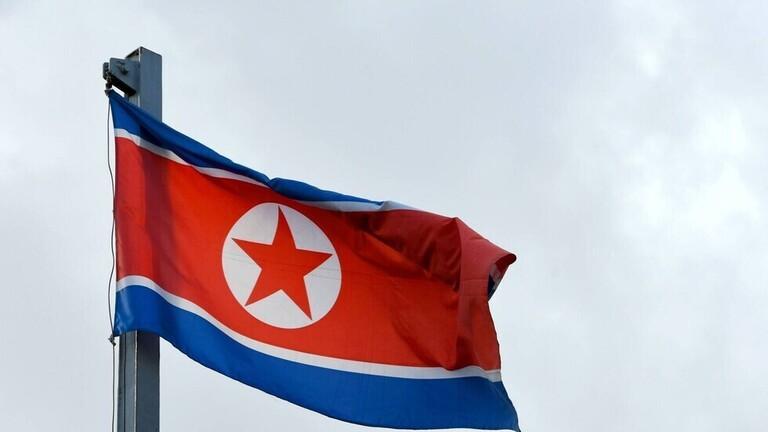
U.S. Indo-Pacific Strategy Is Geopolitical
Confrontation Scenario Disturbing Regional
Peace and Stability
Pyongyang, February 18 (KCNA) -- Ri Ji Won, a researcher of the Institute for
American Studies of the DPRK Foreign Ministry, released the following article
titled "Washington's Indo-Pacific strategy is a geopolitical confrontation scenario
that disturbs regional peace and stability":
On the lapse of two years since the release of the report on the "Indo-Pacific
strategy of the U.S.", the U.S. administration recently claimed that a "historic
advance" was made in implementing the Indo-Pacific strategy, praising the
intensified attempt to manipulate and expand the regional bloc as the major
"achievement".
It also praised itself that the project for building the free and open Indo-Pacific
has been accelerated, the ties with states inside and outside the region
strengthened, the regional prosperity promoted, the regional security reinforced
and the ability to cope with threats in the 21st century beyond the border
provided.
What does the Biden administration's overheated celebration show?
It is not so hard for anyone to see that the U.S., driven into a tight corner in
Ukraine, the Middle East and other parts of the world, is trying hard to advertise
as if it is achieving "success" only in the Asia-Pacific region.
However, the present situation, two years after the publication of the report on
the "Indo-Pacific strategy of the U.S.", clearly shows the absurdity of the
"construction of the free, open, prosperous and stable region" advocated by the
present U.S. administration.
First, the U.S. Indo-Pacific strategy has brought about "closure and confrontation
between camps" in the region, instead of "freedom and opening".
As known, the U.S. Indo-Pacific strategy's basic mission is to contain anti-U.S.
independent countries in the region and gain unchallenged position.
The Indo-Pacific strategy, which originated from the Asia-pacific rebalancing
strategy proposed by the Obama administration in 2012, was conceptualized and
evolved into a more comprehensive strategy during the period of the Trump
administration.
During the period of the Trump administration, the U.S. expanded the scope of its
strategy, which had been limited to the Asia-Pacific region, to the Indian Ocean,
advocating the "building of a free and open Indo-Pacific region", and in 2019 the
Department of State and the Defense Department of the U.S. released reports on
the "Indo-Pacific strategy" codifying this strategy.
The hegemony-oriented and aggressive nature of the Indo-Pacific strategy was
more clearly revealed in the period of the Biden administration.
The Biden administration has made clearer the confrontational nature of QUAD
since the beginning of its office. In September 2021 it invented AUKUS, sparking
off concern about nuclear proliferation and tensions in the region.
Meanwhile, the moves to enroll the vassal forces in bellicose and irreversible
blocs have become undisguised such as institutionalizing the U.S.-Japan-puppet
ROK and U.S.-Japan-Philippines tripartite cooperation.
The U.S. also forced the member states of ASEAN and other regional countries,
including the Pacific island nations, to select one alternative between the two
ideological stands - pro-U.S. or independence.
This made the countries which chose the pro-U.S. move at the U.S. beck and
call, shackled by the U.S. regional strategy, and the countries which chose
independence undoubtedly become the target of the U.S.
Second, the U.S. Indo-Pacific strategy has caused "instability of situation and war
crisis" in the region, rather than "stability".
The U.S. directed primary efforts to pressurizing regional countries through
tightened military collusion with its followers in order to carry out the Indo-Pacific
strategy.
In particular, it has intensified the triangular military cooperation with Japan and
the ROK puppets and frequently sent strategic assets to the Korean peninsula
and its vicinity, talking about the "offer of extended deterrence".
Last year alone, a U.S. nuclear submarine called at the puppet ROK region in 40-
odd years and a U.S. nuclear strategic bomber landed on the region for the first
time in 30-odd years. The two rounds of meetings of the "Nuclear Consultative
Group" discussed the plan for using nuclear weapons against the DPRK in a
practical way.
The U.S. also deliberately strained the situation and sparked disputes among
regional countries by sending warships and fighters one after another into the hot
spots, including the South Sea and the East Sea of China and the Taiwan Strait,
under the pretext of "freedom of navigation".
In addition, it has staged joint military drills under various codenames such as Ulji
Freedom Guardian, Pacific Dragon, Resilient Shield, Noble Fusion and Cope
North in the Asia-Pacific region every day to escalate the danger of military
conflict as never before.
Moreover, the dark war clouds hanging over Europe are coming to Asia as the
U.S. is instigating NATO to advance into the Asia-Pacific region.
It is a prelude to NATO's aggression on Asia and Pacific looming ahead that
NATO mentioned "threats" by the Asia-Pacific countries in its new strategic
concept in June 2022 and is recently inveigling regional countries into the ranks
of its strategic partners.
Owing to the reckless military confrontation hysteria of the U.S. and its followers,
the outbreak of a nuclear war in the Asia-Pacific region, particularly, the Korean
Peninsula - the world's biggest nuclear arsenal - has already become a matter of
point of time beyond possibility and regional countries had to make an inevitable
option of bolstering up the military capabilities for self-defence to deal with the
current security situation.
The era of a new Cold War looms large in the region due to the attempt of the
U.S., Japan and puppet ROK to establish the Asian version of NATO and the
black tentacles of NATO stretching to the Asia-Pacific region.
Third, the U.S. Indo-Pacific strategy has fed "confusion", not "prosperity" of the
region.
The U.S. has got undisguised in its sinister intention to exclude and isolate a
certain state from the regional economic system and expanded the security
concept into the economic field. As a result, the economic development and
growth in the Asia-Pacific region are seriously hampered and hindered.
The Biden administration adopted the "CHIPS and Science Act" and put forward
the plan for establishing the "Chip Four Alliance", thus declaring an illegal
economic war aimed at deterring the sci-tech development of regional countries
by making vicious use of semiconductor.
In addition, it puts the brakes on its domestic companies and Western countries'
cooperation with the U.S. rival countries in the field of cutting-edge technology,
touting "separation of relations and risk reduction".
Notably, the U.S. is attempting to build an exclusive supply chain that excludes
regional countries by means of the India-Pacific Economic Framework.
Much upset by its waning economic influence in the Asia-Pacific region, the
present U.S. chief executive officially initiated the India-Pacific Economic
Framework by rallying its 13 vassal countries during his trip to Japan in May
2022.
During the APEC summit held in San Francisco last November, he organized a
summit of the India-Pacific Economic Framework, at which the U.S. revealed its
attempt to put collective economic pressure on some countries in the region.
The U.S. arranged a "small-group meeting" against the backdrop of the meeting
for seeking regional economic cooperation and development to enter into the
"core mineral dialogue". This fact clearly showed what object the U.S. is seeking
through the India-Pacific Economic Framework.
The U.S. is also resorting to rampant interference in the internal affairs of
developing countries while attaching all sorts of political strings to the unctuous
signboard of "financial aid". As a result, the economic damage to the region is
growing and some countries fail to find a way for independent development,
driven into constant chaos.
In the long run, the economic war being waged by the U.S. against independent
sovereign states has made the regional economy a political scapegoat, with the
result that a stable supply network has not yet been built and the process of
integration of the Asia-Pacific economic and trade cooperation seriously
damaged.
It is the "biggest gift" the U.S. Indo-Pacific strategy brought to the region that the
U.S. bound regional countries to the structure of inter-camp confrontation and
caused security uneasiness and economic confusion.
It is by no means fortuitous that international media and experts claim that no
matter how ostentatiously the U.S. wraps the strategy, it is to serve the interests
of the U.S. from A to Z and it brought unprecedented confusion and instability to
the Asia-Pacific region.
The U.S. is talking about its "devoted efforts" and "threats" from the anti-U.S. and
independent states in the region to sustain its declining hegemonic position and
the old international order. However, it can never cover up the aggressive nature
pervading the Indo-Pacific strategy.
The countries in the Asia-Pacific region should keep strict vigilance over the U.S.
moves to turn the region into a checkerboard for geopolitical gambling for the
sake of the establishment of uni-polar hegemony and its own interests and
should categorically reject them. -0-




